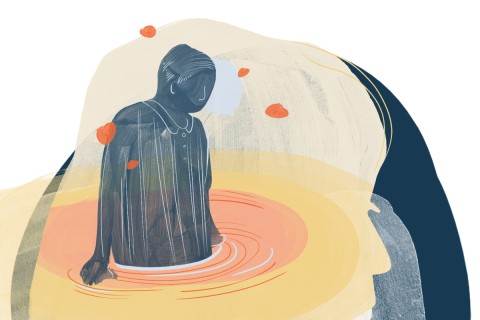Civil religion in a time of war
The United States is back at war—that didn’t take very long. One might argue we never really stopped fighting, or, frankly, that the country has been in a perpetual state of war since World War II. Religious as well as the more generic popular responses to America’s various wars often boils down to a tension between revulsion and obligation. Not surprisingly, that dualism relates directly to the simple formula presidents have used over the years (and through every war) to justify military actions in strategic and moral terms. The threats change—fascism, communism, terrorism—as do the locations, but the moral rationale rarely does.
As I listened to President Obama speak about action he authorized against the so-called Islamic State, he used a familiar trope, that in a world beset by problems the United States has the firepower to pursue a strategy to address those problems and, just as important, a moral imperative to do so:
America, our endless blessings bestow an enduring burden. But as Americans, we welcome our responsibility to lead. From Europe to Asia, from the far reaches of Africa to war-torn capitals of the Middle East, we stand for freedom, for justice, for dignity. These are values that have guided our nation since its founding.
Since the end of the Vietnam War, American presidents have calibrated their commitment to military action under the Vietnam Syndrome, or the truism that the public will not tolerate a long, drawn-out, and massive ground war that costs thousands of American lives. That understanding replaced the “good fight” mentality of the second World War that prevailed for the first part of the Cold War and dissipated in the evident moral bankruptcy of Vietnam. George W. Bush added a corollary to the Vietnam Syndrome by attempting to split the difference—he launched an overwhelming moral campaign to fight an underwhelming and, evidently, misguided war in Iraq and Afghanistan.
And so, Obama’s campaign operates under at least two pathologies—Vietnam and the War on Terrorism. His appeal to American ideals, while echoing presidents of the past, also resounds with some exhaustion. His dilemma reminds me of the position Bill Clinton took when faced with the slaughter in Kosovo. At a White House ceremony celebrating the millennium, Clinton offered remarks after Elie Wiesel had given his keynote address, “The Perils of Indifference: Lessons Learned from a Violent Century.”
Obviously, Clinton could not make a case for staying out of the Balkans and thus argued: “We can’t possibly, perhaps, intervene everywhere, but we must be alive to possibility of preventing death and oppression and forging and strengthening institutions and alliances to make a good outcome more likely.” Not exactly a rallying call for heroic action. Indeed, Clinton’s relatively modest success in stopping Slobodan Milosevic failed to pacify neo-conservatives, especially Robert Kagan and William Kristol, who wanted something grander—a bigger war, perhaps? They believed that Americans had to embrace “military virtues” and to “remind civilians of the sacrifices being made by U.S. forces overseas and explain what those sacrifices are for.”
Yes, what are we fighting for? Soldiers will tell you they fight for each other, under orders, and as part of the national military. Presidents will appeal to those quasi-mythical and admittedly amorphous ideals that get rehashed as a kind of civil religion. But, we the people, with our unorganized interests and obligations and faiths consistently seem to pose a problem for those trying to convey clear strategic and moral imperatives. We vacillate between support and dissent and apathy about war. We praise the military, criticize the president, and faintly consider the immediate or long-term consequences of war. In short, we frustrate the hopes of presidents and ideologues alike, and the nation is better off for it. Civil religion in a time of war is a dangerous proposition because it conflates the strategic commitments of violence and the moral notions of an imagined nation. Frustration rather than contentment should always accompany America’s civil religion.
Our weekly feature Then and Now harnesses the expertise of American religious historians who care about the cities of God and the cities of humans. It's edited by Edward J. Blum and Kate Bowler.



